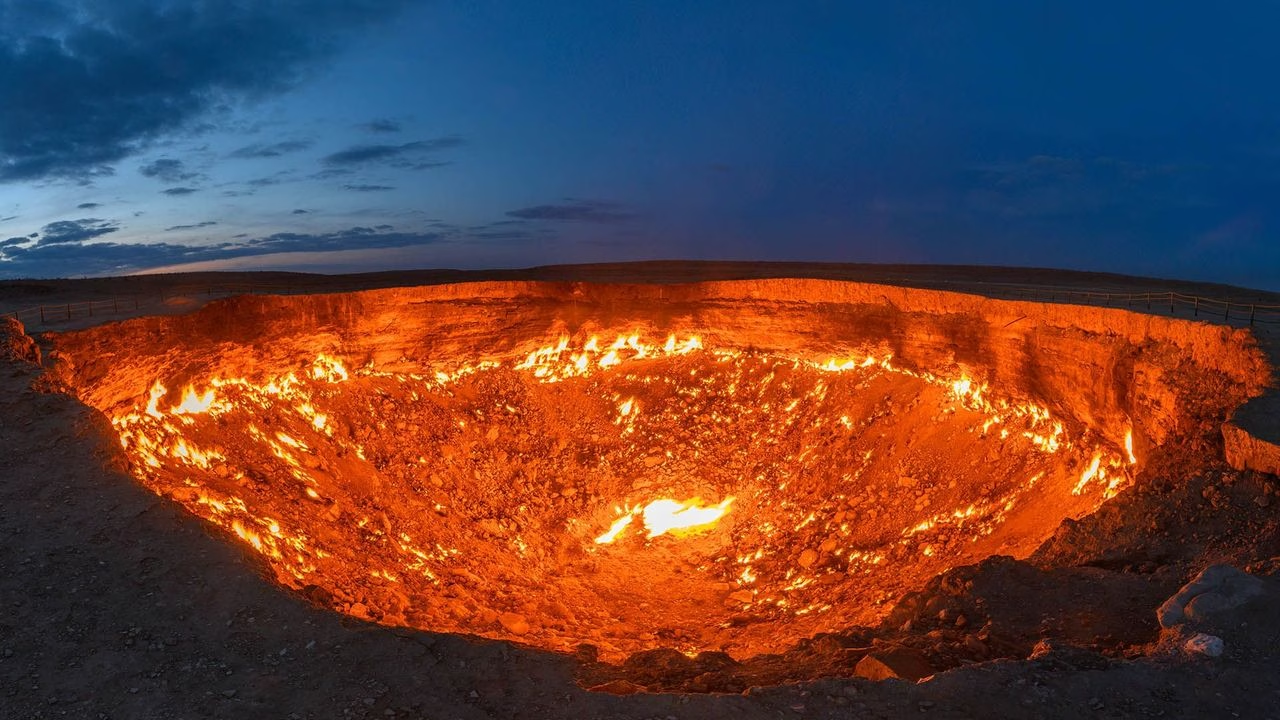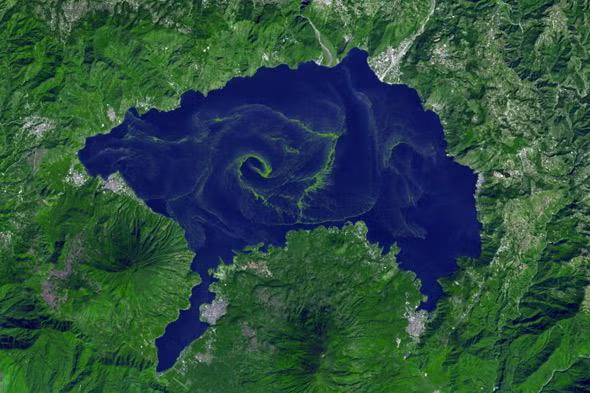Earth is a living, breathing planet sculpted over billions of years by wind, water, fire, and ice. While many of us are familiar with towering mountains and deep ocean trenches, the Earth hides countless unusual geological wonders—natural formations so bizarre, beautiful, and baffling that they seem like scenes from a science fiction novel.
From fiery holes in the desert to perfectly round stones that roll on their own, here are 10 of the world’s most unusual geological wonders you probably never knew existed.
1. The Door to Hell – Turkmenistan
In the middle of the Karakum Desert in Turkmenistan lies a fiery pit that has been burning for over five decades. Officially called the Darvaza Gas Crater, locals refer to it as the “Door to Hell.”

In 1971, Soviet geologists were drilling for natural gas when the ground collapsed, forming a large crater. Fearing the release of poisonous gas, they lit it on fire, expecting it to burn out in a few days. It never stopped.
Today, the crater is 230 feet wide and 98 feet deep, glowing with flames 24/7. The Earth itself has opened up, unleashing a portal to the underworld.
2. The Wave – Arizona, USA
Located in the Paria Canyon-Vermilion Cliffs Wilderness, The Wave is a surreal, undulating rock formation composed of Jurassic-age Navajo sandstone.
What makes it special? The layers of red, pink, and yellow sandstone have been carved over millions of years by wind erosion, forming a fluid, wave-like structure. It resembles a painting that has melted into a 3D form.
Due to its fragility, only a limited number of visitors are allowed each day, making this not only unusual but also elusive.
3. Salar de Uyuni – Bolivia
Salar de Uyuni is the largest salt flat in the world, covering an area of over 10,000 square kilometers. But what makes it unusual is what happens after it rains.
When covered with a thin layer of water, Salar de Uyuni becomes the world’s largest mirror, reflecting the sky so perfectly it’s hard to tell where Earth ends and the heavens begin. The effect is otherworldly, and it’s even visible from space.
This massive, blinding white expanse also plays a crucial role in Bolivia’s lithium economy, containing nearly half of the world’s lithium reserves.

4. Moeraki Boulders – New Zealand
Along Koekohe Beach on New Zealand’s South Island, you’ll find giant spherical stones scattered along the sand. Some weigh several tons and measure over two meters in diameter.
Known as the Moeraki Boulders, these natural formations date back around 60 million years, when they were created through a process called concretion. In this process, mineral deposits accumulate around a core, much like the way a pearl forms.
Their perfect shape and eerie distribution have inspired local Maori legends and endless tourist fascination.
5. Giant’s Causeway – Northern Ireland
This UNESCO World Heritage site comprises approximately 40,000 interlocking basalt columns, many of which are perfectly hexagonal, extending out into the sea like the remains of an ancient road.
Formed by volcanic activity around 50 to 60 million years ago, the Giant’s Causeway is both a geological and a mythical wonder. Legend has it that the columns were built by the Irish giant Finn MacCool, who was preparing to fight a Scottish rival.
The symmetry and order of the rocks are so precise that many first-time visitors think they must be man-made.

6. Blood Falls – Antarctica
In the icy wilderness of Antarctica, a strange crimson stream flows from the Taylor Glacier into Lake Bonney. Dubbed Blood Falls, this creepy-looking spectacle is not blood, but it’s just as fascinating.
The red color comes from iron-rich, saltwater trapped beneath the glacier for millions of years. When exposed to air, the iron oxidizes (like rust), giving the water its blood-red hue.
What’s even more interesting? The water originates from an ancient subglacial ecosystem, untouched by sunlight and oxygen for millions of years.
7. Sailing Stones – Death Valley, USA
In California’s Death Valley National Park, mysterious rocks known as sailing stones appear to move on their own, leaving long trails in the dry lakebed of Racetrack Playa.
For decades, their movement baffled scientists. There were no animals, no people, and no prominent external force.
Recent studies have revealed that a rare combination of thin ice sheets, water, and light winds can cause stones to move slowly over time. The process is so subtle that it took GPS tracking and time-lapse photography to confirm it.
8. Zhangye Danxia Landform – China
In Gansu Province, the Zhangye Danxia Landform Geological Park is home to a stunning sight that resembles a rainbow painted across the mountains. These vividly colored rock formations were formed over 24 million years of sediment layering and tectonic uplift.
The result is stunning: red, orange, yellow, green, and blue striped hills that stretch as far as the eye can see.
This surreal landscape has become one of China’s most iconic and colorful geological wonders.
9. Chocolate Hills – Philippines
In the province of Bohol, Philippines, lie the Chocolate Hills—over 1,200 nearly symmetrical grass-covered hills that turn brown during the dry season, giving them a chocolate-like appearance.
Geologists believe these mounds are formed from the erosion of limestone, but what makes them unique is their uniform size and shape.
Locals tell legends of giants crying over lost love or battles between mythical beings. Scientific or mythical, they remain one of Earth’s strangest natural wonders.
10. Lake Natron – Tanzania
Lake Natron is one of the most deadly yet visually stunning lakes on Earth. It’s shallow, alkaline, and can reach temperatures of 140°F (60°C), with a pH as high as 10.5, similar to ammonia.
What makes it eerie? Animals that die in the lake often become calcified, as the extreme conditions preserve their bodies in a stone-like state.

Photographer Nick Brandt famously captured images of birds and bats that appeared “turned to stone” after dying in or near the lake.
Despite its hostility, flamingos thrive there, using it as a breeding ground—a paradoxical ecosystem in a deadly environment.
Final Thoughts
These 10 unusual geological wonders remind us of Earth’s incredible power to sculpt beauty, mystery, and strangeness all at once. They challenge our understanding of what’s “natural,” stretch the limits of imagination, and inspire awe with every bizarre detail.
From fiery craters to mirror-like salt flats, these landscapes are proof that our planet is far from ordinary. And while they might not be as famous as the Grand Canyon or Mount Everest, their uniqueness makes them unforgettable.



